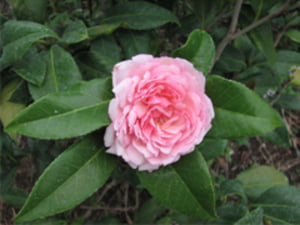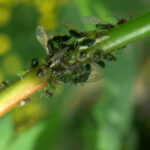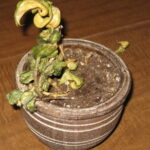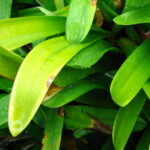The Camellia (C. japonica) is a popular blooming shrub native to eastern and southern Asia. The Camellia, which can live for 100 years or more, is known for its large and colorful blooms that appear in cooler months when other plants are dormant as well as its dark green shiny leaves. However, camellia pests and diseases can damage or kill a camellia so identification of what is causing uneven growth or discoloration is important for control.
The most damaging insect pests on camellias are the aphid, spider mite, and scale. Aphids are tiny insects that live and rapidly multiply under the surface of the leaves and suck the plant’s sap causing stunting of the leaf growth. Also, the excrement from the aphids can quickly cover underlying leaf surfaces where it forms a black sticky mold known as honeydew that attracts ants, flies and other undesirable insects and interferes with photosynthesis. Apply neem oil to the underside of the leaves, wait 24 hours, then use a strong spray of water to clean the dead aphids and honeydew off the plant. Insect control is important because insects can spread camellia diseases from one plant to another.
Spider mites also live on the underside of leaves during the summer and cause a bronzing of the leaves with some web development seen with heavy infestation. Use the same method for control as for aphid infestation.
Tea Scale shows up as tiny brown spots on both sides of the leaves. Use an insecticidal soap solution during the summer or light dormant oil in the winter for control. Tea scale is common in nurseries that grow camellias so look carefully at the top and underside of the foliage of a new plant before purchase.
The most common fungal disease of camellia is known as virus variegation. The leaves have yellow or light green streaks. There is no cure and the plant can live with the virus.
Dieback is caused when fungus enters a wound in the plant. The plant will suddenly wilt and die back. Control by using caution when working around plants and sterilizing cutting tools with bleach.
Camellia flower blight causes the flowers and buds to turn brown and hard and fall off. The fungus lives on the fallen blooms and is carried by the wind. Keep the area around the plant clean of fallen vegetation and mulch well.
Algal leaf spot shows up as circular leaf spots with wavy edges and is caused by too much overhead water and low air circulation. Armillaria root rot causes sudden plant death and when pulled from the ground, the plants roots are rotted with fungal growth. The disease is spread from roots of other plants as well as naturally occurring fungi that lives in the soil.
Most camellia diseases can be avoided by using good sanitation methods such as raking up old flowers and leaves and providing good air circulation. Also, overhead watering should be avoided, especially during the summer months.
More gardening information at www.biglump.com





